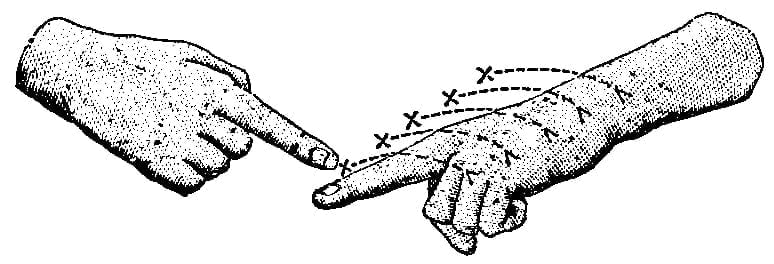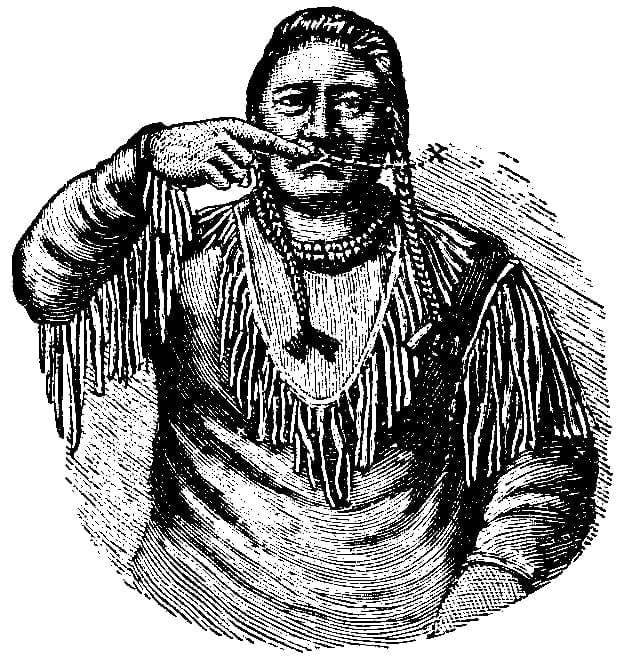
The Silent Diplomacy: How Comanche Sign Language Forged an Empire on the Plains
The vast, undulating expanse of the North American Great Plains once teemed with a kaleidoscope of cultures, each speaking its own tongue. From the Arapaho to the Cheyenne, the Sioux to the Pawnee, a cacophony of languages echoed across the buffalo-dotted prairies. Yet, amidst this linguistic diversity, a remarkable and elegant solution emerged, a silent symphony that transcended spoken words and fostered understanding across tribal lines: the Plains Sign Language. And at the very heart of this intricate system, influencing its development and ensuring its widespread adoption, stood the formidable Comanche Nation.
Often dubbed the "Lords of the Plains," the Comanche were not just master horsemen and fearsome warriors; they were also astute traders and diplomats whose influence stretched from present-day Kansas to deep into Mexico. Their dominance, both military and economic, meant that their dialect of the Plains Sign Language became the widely accepted lingua franca, a vital tool for communication, negotiation, and survival in a complex, multi-tribal world. This was not merely pantomime; it was a sophisticated, structured language, capable of conveying complex thoughts, emotions, and narratives with astonishing precision and speed.

A Necessity Born of Diversity
Imagine a world without common ground for communication. Trade would halt, diplomacy would crumble, and conflict would be almost inevitable. For the indigenous nations of the Plains, who frequently interacted for trade, hunting, warfare, and social gatherings, the need for a universal means of understanding was paramount. Spoken languages varied wildly, often unintelligible to neighboring tribes. Plains Sign Language filled this critical void.
While various tribes contributed to its lexicon and grammar, the Comanche’s central position in the Plains ecosystem solidified their version as the dominant dialect. Their immense territory, their role as key suppliers of horses, and their military might meant that anyone wishing to trade, negotiate, or simply traverse their lands needed to understand their signs. As one 19th-century observer, Colonel Richard Irving Dodge, noted, the Plains Sign Language was "the common language of all the Plains Indians…it is wonderful what a range of subjects can be discussed, and how clearly ideas can be conveyed by this silent method."
The Comanche Contribution: Precision and Power
The Comanche didn’t invent Plains Sign Language, but they perfected its use and ensured its proliferation. Their mastery of the system was legendary. It was an integral part of their daily lives, learned from childhood, observed in trade negotiations, and practiced during buffalo hunts and war councils.
What distinguished Plains Sign Language, particularly the Comanche-influenced dialect, was its logical and mnemonic nature. Signs were often derived from observable characteristics or actions. For instance, the sign for "horse" involved cupping the hand and moving it up and down to mimic the ears of a horse, or placing two fingers on the head like ears. "Buffalo" was conveyed by raising both hands with bent fingers to imitate horns. "To eat" was a motion of bringing the hand to the mouth. These weren’t arbitrary gestures; they were codified movements understood by all who used the system.
"The gestures are exceedingly graceful and are made with a quickness and precision which speak volumes," wrote Garrick Mallery, a pioneer in the study of Native American sign languages, in his monumental 1880 work, Introduction to the Study of Sign Language Among the North American Indians. He described the sign language as "a distinct language, having a definite vocabulary and grammar," not merely "a code of signals."
The efficiency of Comanche sign language was astounding. Skilled users could "converse" at a remarkable pace, conveying complex sentences and even entire narratives. It was a language of nuance, where the speed, force, and repetition of a sign could alter its meaning. The context of the conversation, the expression on the signer’s face, and the direction of the gaze all added layers of meaning, much like tone and inflection in spoken language.

More Than Just Words: Applications of a Silent Tongue
The applications of Comanche sign language were incredibly diverse, showcasing its adaptability and necessity:
-
Trade and Commerce: The Comanche were the undisputed masters of the horse trade. They bred, captured, and traded vast numbers of horses, which were essential for hunting, warfare, and transportation. Sign language allowed them to negotiate prices, discuss quantities, and establish complex trade routes with disparate tribes and even with Spanish and Mexican settlers. Without it, the economic engine of the Plains would have sputtered.
-
Diplomacy and Peacemaking: When two tribes, often with a history of conflict, needed to negotiate a truce, form an alliance, or settle disputes, sign language was the neutral ground. It allowed for clear communication of terms, intentions, and demands, reducing misunderstandings that could lead to further bloodshed. Treaties, though sometimes broken, were often forged in silence, through the precise movements of hands.
-
Warfare and Hunting: In the stealthy world of raiding and hunting, silence was golden. Warriors could communicate battle plans, flanking maneuvers, and retreat signals without uttering a sound, crucial for surprise attacks or coordinating a buffalo drive. A raised hand might signal danger, a sweeping motion indicate a direction of movement, and specific gestures could identify enemies or allies from afar.
-
Storytelling and Social Interaction: Beyond practical uses, sign language was also a medium for cultural expression. Around campfires, stories of heroic deeds, humorous anecdotes, or historical events could be shared with visitors who didn’t speak the local dialect. It fostered a sense of community and shared understanding, bridging cultural divides through a universal visual lexicon.
-
Inter-tribal Relations: With frequent intermarriage between tribes, sign language became a domestic tool. A Cheyenne woman married to a Comanche man, or vice versa, could communicate effectively with her spouse’s family, fostering familial bonds and cultural exchange.
The Silent Language’s Decline and Enduring Legacy
The golden age of Plains Sign Language, and the Comanche’s central role in it, began to wane with the profound changes brought by American expansion. The confinement of Native American tribes to reservations fragmented their traditional territories and disrupted their inter-tribal interactions. The forced assimilation policies, which prioritized English education and discouraged native languages, further eroded the practice of sign language. As the buffalo herds vanished and the horse culture diminished, so too did many of the contexts in which the silent language flourished.
However, the legacy of Comanche sign language is far from forgotten. It stands as a testament to the ingenuity and adaptability of Native American cultures. Ethnographers and linguists in the late 19th and early 20th centuries painstakingly documented the language, recognizing its historical and linguistic significance. Efforts are ongoing within Native communities today to revive and preserve their traditional languages, including sign languages, recognizing them as invaluable components of their cultural heritage.
Today, while few fluent signers remain, the Plains Sign Language, with its strong Comanche imprint, continues to fascinate scholars and serve as a powerful symbol of indigenous communication. It reminds us that language is not solely confined to the spoken word but can manifest in myriad forms, each capable of expressing the richness and complexity of human experience. The silent diplomacy of the Comanche, once essential for empire and survival on the vast American Plains, remains a profound chapter in the history of human communication – a silent, yet powerful, testament to their enduring legacy.


